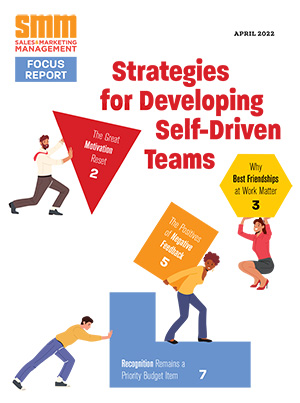If a marketing campaign lands in a forest and there’s no one there to hear it, does it make a sound? Today’s organizations arm their sales and marketing teams with customer data, engage their frontline employees, and still launch marketing campaigns that fall flat. With all the resources and technology available, why does this happen? Probably because too many organizations are focused on getting their messages in front of prospective customers. What they are often not doing sufficiently is developing tactics that cut through the noise so those prospects are willing and able to listen to those messages.
Demand generation today is about finding the right vehicles and tactics to reach customers. That means creating and curating content that interests them, offering incentives that encourage trial, creating integrated multi-touch marketing campaigns, and measuring the results to learn what steps to take next.
What’s the impact?
Recently, I served as a judge for the annual Business Marketing Association (BMA) B2 Awards, which honor the best examples of business-to-business marketing. Most of the entries I reviewed were quite good. A few were outstanding. What was the difference between good and great? It was not necessarily the creative execution or the strategy, but
the way they measured results.
A few entries had achieved outstanding results, but only a small percentage even measured the right things. In some cases, the metrics themselves were so bland or general that they offered very little guidance as to whether the campaign had been successful. In more than a few instances, the metric supplied was something like, “The client liked the results” or “The vice president seemed happy with the campaign.”
Don’t get me wrong, I’m as interested in pleasing my clients with my presentation as anyone else. But I want them to be pleased because we improved their condition. It’s not about how slick the presentation is or how happy the marketing team or the corporate executives feel when we’re done. It’s about what changed for the business as a result of the campaign.
What questions should you ask to be sure you’re measuring the right things? Start with these:
• Did new customer inquiries increase?
• Did we improve retention of our existing customers by lowering turnover or churn?
• Did our share of wallet of current customers increase?
• Did we increase revenues?
• Did we build brand? (If so, how are we measuring that?)
You are what you measure
The entries in the BMA contest certainly don’t reflect an isolated situation. In fact, just by including metrics and results as part of the contest criteria, BMA is ahead of most of the pack. I see this situation on a regular basis when talking to marketers across many different industries and organizations.
The flip side of the equation — too many metrics — is no better. Far too often, I see situations where marketers are measuring everything that moves, whether or not these metrics are relevant to moving the needle for the business. This can include the number of clicks on a Web link, the number of followers on Facebook or Twitter, the number of impressions generated and other such numbers. The problem with most of these “number of” metrics is that they are internal process metrics. They’re focused on how well the marketing team executed a particular marketing tactic. They are not external business-related metrics. They don’t tell you whether or not the program implemented actually moved your business.
Be sure to choose the right metrics, focusing on those areas that not only provide useful information, but that your team can actually impact. Knowing a metric went up or down two points isn’t relevant to marketers unless they know what to do with that information.
Former BMC Software marketing head Kim DeCarlis says, “The important thing I’ve put in place with my team is a hierarchy of measurement. Here are the two or three things at the top of the hierarchy that I really care about — that I will report to the executive team and to the board — that tell us marketing is moving the needle.”
The right metrics provide a means for marketing organizations to show their value to the rest of the organization in a concrete way that the organization can truly understand. That helps both marketers and executives justify the investment the organization is making in marketing.
All marketing is global
It’s sometimes hard to consider day-to-day operations and infrastructure as a strategic part of a marketing function, yet it is here that many well-intentioned efforts fall by the wayside. A successful organization will look at operations from a strategic perspective, deploying and using key analytic tools to track and evaluate marketing initiatives. An effective marketing team ensures that goals and objectives are supported by the correct key performance indicators and metrics, and that these metrics are tracked and reviewed regularly. Information on the effectiveness of marketing initiatives should be communicated on an ongoing basis through easy-to-comprehend dashboards.
Marketing automation is critical to today’s successful marketing organization. It’s important to have the right tools available to streamline management and delivery of campaigns and programs. According to Forrester Research, 61 percent of B2B marketing executives surveyed expected the ratio of money spent on technology versus marketing programs to increase in 2014.
All marketing today is global, whether we want it to be or not. Processes should be in place to ensure that marketing initiatives are global in nature, with the ability to localize as appropriate within various territories or geographies.
Finally, high-achieving marketing organizations that stand out above the noise actively seek out and adopt best practices from other organizations. They choose those elements that will work for them and adapt them to the requirements of their particular business.

 Linda J. Popky is president of Leverage2Market Associates, a strategic marketing company that helps transform organizations through powerful marketing performance. This column is excerpted with permission from her book, “Marketing Above the Noise: Achieve Strategic Advantage with Marketing that Matters” (Bibliomotion, 2015).
Linda J. Popky is president of Leverage2Market Associates, a strategic marketing company that helps transform organizations through powerful marketing performance. This column is excerpted with permission from her book, “Marketing Above the Noise: Achieve Strategic Advantage with Marketing that Matters” (Bibliomotion, 2015).


